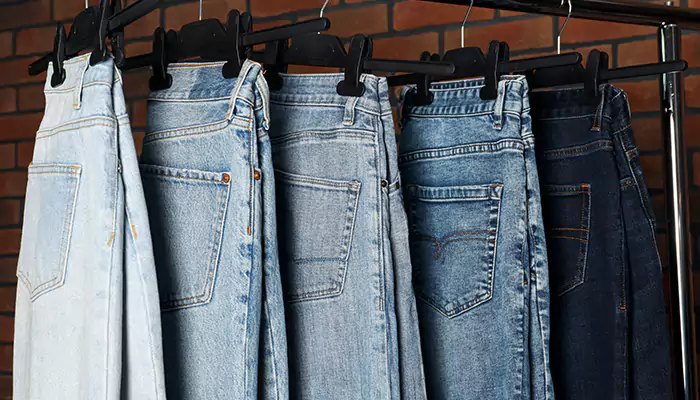
From barrel legs to pastel tones, denim’s 2025 makeover blends sustainability, comfort, and design innovation to keep the century-old staple firmly in style.
Few fabrics have the staying power of denim. Worn by miners in the 19th century, adopted by counterculture in the 20th, and embraced globally in the 21st, denim has been a constant presence in wardrobes worldwide. Yet in 2025, this seemingly timeless textile is undergoing one of its most dynamic reinventions to date.
The shift is being driven by three converging forces: evolving consumer tastes, urgent sustainability demands, and advances in textile technology. The result is a denim market brimming with unexpected silhouettes, unconventional colours, and fresh styling approaches—reshaping offerings in both luxury fashion and high-street retail.
Skinny jeans, once dominant, have been dethroned by comfort-driven styles. Barrel-leg, balloon-shaped, and wide-leg cuts are emerging as the most in-demand silhouettes, balancing ease of movement with a fashion-forward edge. These shapes also pair well with both fitted and oversized tops, making them versatile across age groups and style preferences.
Classic indigo remains a cornerstone, but 2025 is seeing a surge in alternatives—powdery pastels, muted earth tones, and bold jewel shades. Crucially, these colours are increasingly achieved using low-impact, water-saving dyeing processes, aligning aesthetics with sustainability goals.
Raw hems, visible overlocking, asymmetrical paneling, and patchwork denim are moving into the mainstream. This artisanal approach draws inspiration from streetwear and upcycling, giving garments a one-of-a-kind appeal while celebrating visible craftsmanship.

Cargo pockets, reinforced stitching, hammer loops, and adjustable waistbands are blurring the boundaries between workwear and fashion. The utilitarian trend not only adds functionality but also taps into the nostalgia for rugged, durable clothing.
Historically, denim production has been criticized for excessive water use, chemical-heavy finishing, and environmental degradation. In 2025, the industry is making meaningful strides toward reform:
Denim is increasingly seen as an investment piece rather than a disposable fashion item. The durability of high-quality denim aligns with consumers’ growing preference for buying less, but better.
The vintage denim market is thriving—both for its sustainability credentials and its aesthetic appeal. Pre-loved Levi’s 501s and Japanese selvedge jeans are fetching premium prices, especially when featuring unique fades and patina.
Collaborations are also breathing new life into the category. The Levi’s x Miu Miu partnership reimagined vintage jeans with crystal embellishments, embroidery, and reworked silhouettes, attracting luxury buyers without abandoning denim’s utilitarian roots.

Global Market Outlook
According to Allied Market Research, the global denim market is projected to reach $105 billion by 2030, with Asia-Pacific expected to lead growth. Factors driving this include:
Competition from athleisure remains strong, but denim’s 2025 focus on innovation, comfort, and sustainability is keeping the category relevant across demographics and geographies.
In 2025, denim’s evolution is not a rejection of tradition but an expansion of its possibilities. By blending bold design experimentation with eco-conscious manufacturing, the industry is ensuring that jeans—whether barrel-legged in sage green or patchworked from vintage scraps—remain a cornerstone of global fashion.
From the runway to the resale rack, denim continues to prove that it is not just a fabric, but a canvas for reinvention.